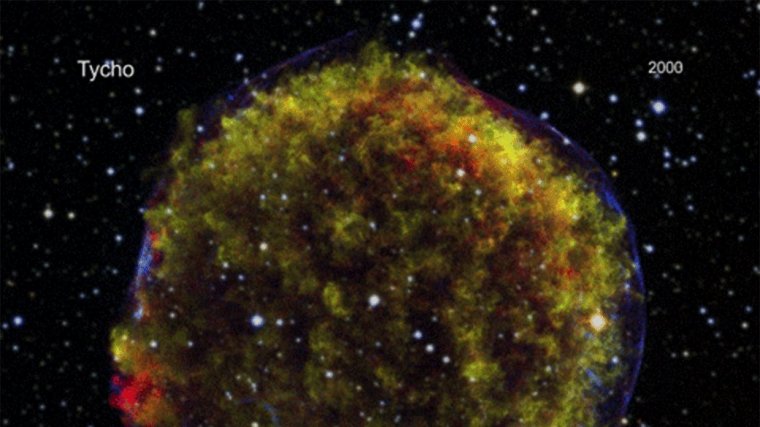| News / Space News |
Chandra Movie Captures Expanding Debris from a Stellar Explosion
NASA | MAY 18, 2016
When the star that created this supernova remnant exploded in 1572, it was so bright that it was visible during the day. And though he wasn’t the first or only person to observe this stellar spectacle, the Danish astronomer Tycho Brahe wrote a book about his extensive observations of the event, gaining the honor of it being named after him.

Expanding Debris from a Stellar Explosion. ![]()
In modern times, astronomers have observed the debris field from this explosion − what is now known as Tycho’s supernova remnant. Today, they know that the Tycho remnant was created by the explosion of a white dwarf star, making it part of the so-called Type Ia class of supernovas used to track the expansion of the Universe.
Since much of the material being flung out from the shattered star has been heated by shock waves − similar to sonic booms from supersonic planes − passing through it, the remnant glows strongly in X-ray light.
Astronomers have now used Chandra observations from 2000 through 2015 to create the longest movie of the Tycho remnant’s X-ray evolution over time, using five different images. This shows the expansion from the explosion is still continuing about 450 years later, as seen from Earth’s vantage point roughly 10,000 light years away.
This range in speed of the blast wave’s outward motion is caused by differences in the density of gas surrounding the supernova remnant. This causes an offset in position of the explosion site from the geometric center, determined by locating the center of the circular remnant.
The astronomers found that the size of the offset is about 10% of the remnant’s current radius, towards the upper left of the geometric center. The team also found that the maximum speed of the blast wave is about 12 million miles per hour.
YOU MAY ALSO LIKE



